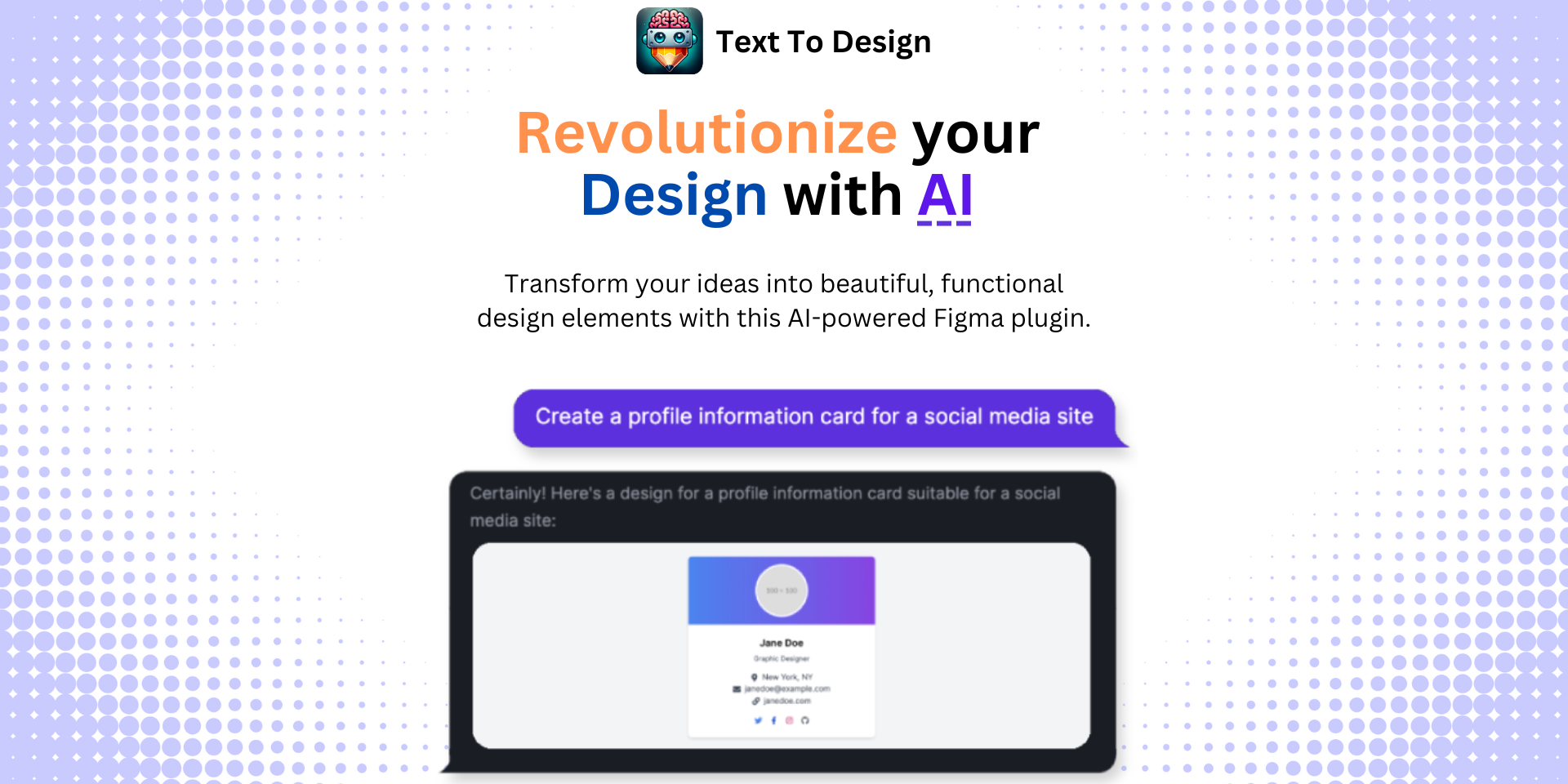Figma Plugin Development: Enhancing the Design Process
No results found
1/28/2024
Figma Plugin Development: Enhancing the Design Process
Figma has become an indispensable tool for designers globally. Its seamless collaborative abilities, coupled with an expansive set of features, make it a go-to solution for design and prototyping. However, one of the defining aspects that significantly boosts its functionality is the ability to create and use plugins. In this blog post, we will dive deep into Figma plugin development, discussing its basics, benefits, and a step-by-step guide on developing your own plugin1.
What are Figma plugins?
Figma plugins are programs or applications that extend the functionality of Figma's editors1. These plugins can be developed using JavaScript and HTML, allowing developers to customize the user experience and create more efficient workflows1. Powered by web technologies, plugins are a flexible way to tailor the Figma experience to your needs.
Why Develop Figma Plugins?
Figma plugins can help automate routine tasks, bring in external data, or even transform the way you approach design. Here are a few reasons why you might consider developing your own Figma plugin:
-
Customization: Plugins can be tailored to suit your individual or team's needs, providing custom solutions for your unique problems.
-
Automation: Plugins can automate repetitive tasks, saving time and allowing you to focus on the creative aspect of design.
-
Integration: Plugins can integrate with external services, pulling in useful data or exporting your designs in the desired format.
Prerequisites for Plugin Development
Before you start developing a Figma plugin, there are a few prerequisites you need to fulfill2:
-
Figma Desktop App: Plugin development and testing requires the Figma desktop app2.
-
Visual Studio Code: It's recommended to use Visual Studio Code for writing your plugin code2.
-
Node.js: Node.js is required for installing necessary tools and dependencies2.
-
TypeScript: Figma's Plugin API supports TypeScript, making it beneficial to have a basic understanding of it2.
Developing Your First Figma Plugin
If you meet the prerequisites, you're ready to start developing your first Figma plugin. Here's a simplified step-by-step guide to get you started2:
-
Create the Plugin: Within the Figma desktop app, select 'Plugins' from the Figma menu, then under 'Development', select 'New Plugin'.
-
Set Up the Development Environment: Install Visual Studio Code and Node.js, then set up TypeScript compilation.
-
Write Your Code: Using JavaScript or TypeScript, write your plugin code.
-
Test the Plugin: Test the plugin within the Figma desktop app, making sure it works as expected.
Remember, this is just a basic guide. If you want to dive deeper, consider visiting the Figma Plugin API documentation and the Plugin Quickstart Guide2.
Enhancing Plugin Development with Create-Figma-Plugin
For those looking for a more comprehensive toolkit for developing Figma plugins, consider using 'create-figma-plugin' by yuanqing3. This toolkit provides a set of utilities that simplify plugin development, helping you to create more complex plugins with ease3.
Conclusion
Developing Figma plugins can be a game-changer for your design workflow. By learning to develop your own plugins, you unlock a world of customization, automation, and integration possibilities.
If you're a designer or a developer looking for a way to transform your text descriptions into innovative design ideas, consider using the Text To Design Figma Plugin. This AI-powered plugin can significantly enhance your design process, helping you bring your creative ideas to life  .
.
Get started with Figma plugin development and supercharge your design workflow today!
Footnotes
Step Into the Future of Design with your AI Copilot
Join +40K designers revolutionizing their workflow with AI. Install our Text-to-Design plugin in just a few clicks to unlock your creative potential. Start for free and instantly generate designs for your project.